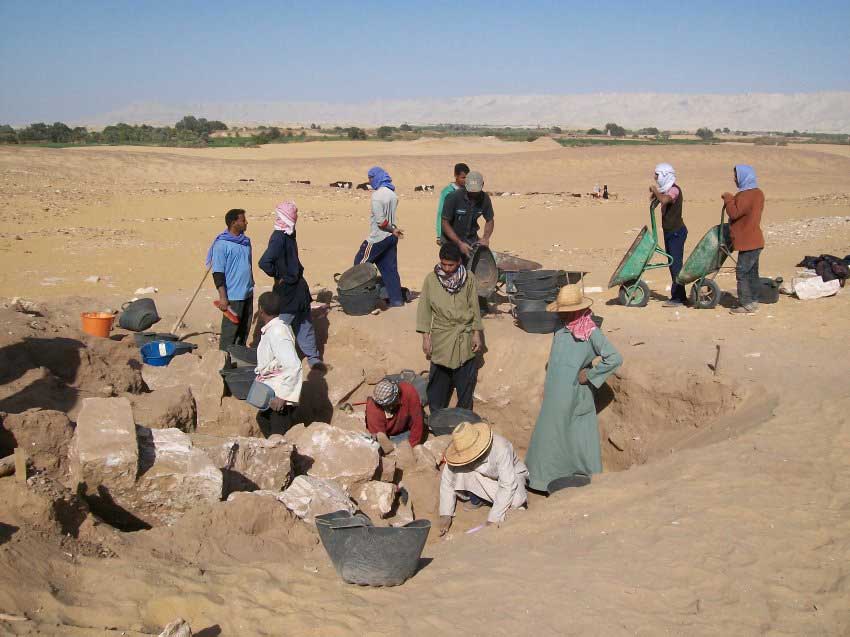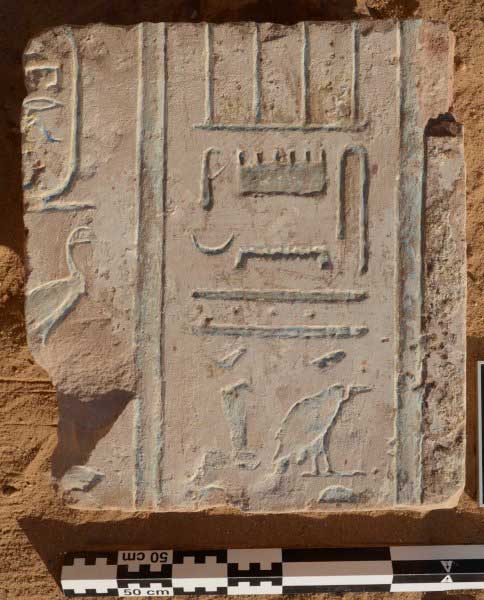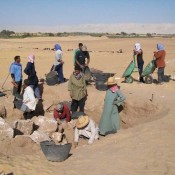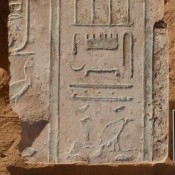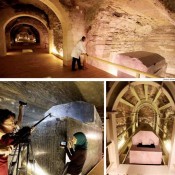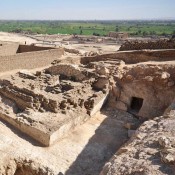The mystery behind the disappearance of a Persian army of 50,000 men in the Egyptian desert around 524 BC seems to have been solved. Leiden Professor Olaf Kaper unearthed a cover-up affair and solved the riddle.
Swallowed by a sand dune
It must have been a sand storm, writes the Greek historian Herodotus. He tells the story of the Persian King Cambyses, who entered the Egyptian desert near Luxor (then Thebes) with 50,000 men. The troops supposedly never returned; they were swallowed by a sand dune. A fantastic tale that was long the subject of many debates.
Long quest
Egyptologist Olaf Kaper never believed it: “Since the 19th century, people have been looking for this army: amateurs, as well as professional archaeologists. Some expect to find somewhere under the ground an entire army, fully equipped. However, experience has long shown that you cannot die from a sandstorm, let alone have an entire army disappear.”
Petubastis III
Kaper is now putting forward an entirely different explanation. He argues that the army did not disappear, but was defeated. “My research shows that the army was not simply passing through the desert; its final destination was the Dakhleh Oasis. This was the location of the troops of the Egyptian rebel leader Petubastis III. He ultimately ambushed the army of Cambyses, and in this way managed from his base in the oasis to reconquer a large part of Egypt, after which he had himself crowned Pharaoh in the capital, Memphis.’
Spin doctor
The fact that the fate of the army of Cambyses remained unclear for such a long time is probably due to the Persian King Darius I, who ended the Egyptian revolt with much bloodshed two years after Cambyses’ defeat. Like a true spin doctor, he attributed the shameful defeat of his predecessor to natural elements. Thanks to this effective manipulation, 75 years after the events, all Herodotus could do was take note of the sandstorm story.
Pieces of the puzzle
Kaper made this discovery accidentally; he was not looking for it actively. In collaboration with New York University and the University of Lecce, he was involved for the last ten years in excavations in Amheida, in the Dakhleh Oasis. Earlier this year, he deciphered the full list of titles of Petubastis III on ancient temple blocks. ‘That’s when the puzzle pieces fell into place’, says the Egyptologist. ‘The temple blocks indicate that this must have been a stronghold at the start of the Persian period. Once we combined this with the limited information we had about Petubastis III, the excavation site and the story of Herodotus, we were able to reconstruct what happened.’
NYU Excavations at Amheida in Egypt’s Dakhleh Oasis
The Amheida project was started at Columbia University in 2001. Since 2008, New York University is the primary sponsoring institution, with Columbia University continuing as a partner in the project.
The excavations at Amheida collaborate with other participating groups in the Dakhleh Oasis Project, an international venture now three decades old dedicated to studying the interaction between human settlement and the environment over the long span from the earliest human presence in the oasis to modern times. Amheida itself has remains spanning nearly three millennia, and paleolithic material is found along its fringes.
